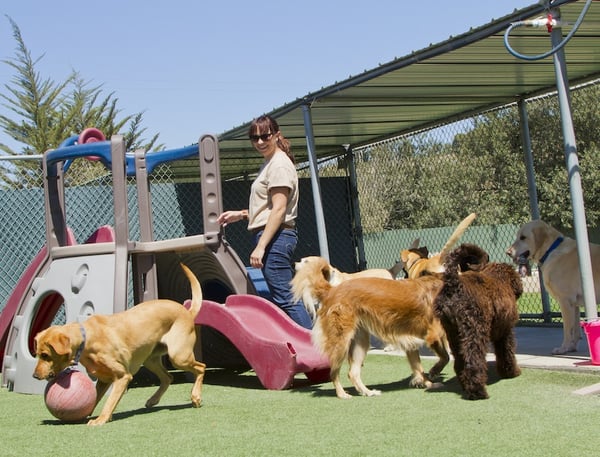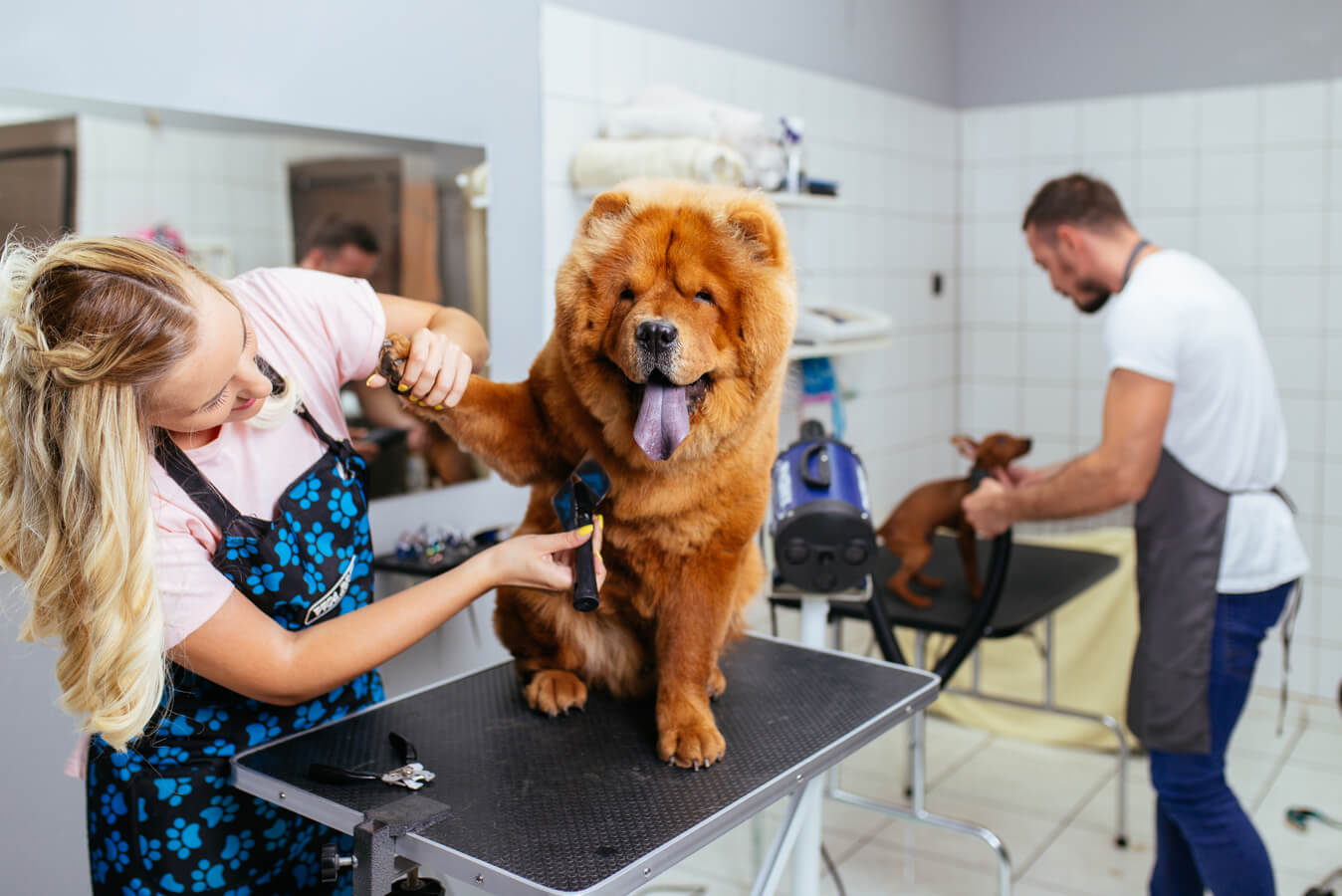Being in a new or different environment can often be a source of worry for humans and dogs. Being in daycare or a kennel setting can be exciting for some dogs; for others, it can be their worst nightmare.
But how do we know? Dogs don’t speak! We watch them closely! It’s a dog’s behavior and body language that lets us know.
Here is our top five tips for kennel technicians when working with dogs.

The Approach
Most of you have heard of the age-old way to approach dogs. You should approach at a slow walking page without making any overly loud sounds and put your hand out for Fido to smell (it’s often modified to an open palm). How the dog responds depends on how the dog feels:
-
If Fido is feeling stressed enough to not engage with you, he will already be on high alert. He could see your hand as a threat. If he doesn’t attempt to nip at you, he will retreat further away from you.
-
Dogs who are happy and excited will have likely already jumped all over you or at least engaged with you in some way.
-
If you have a nervous dog who doesn’t want to engage, that’s fine too. Ignore him. Be calm in the same area. You may want to throw some treats on the floor around you to entice him. Allow him to come to you. It really is that simple. Once he’s figured out, you’re OK, he’ll probably never leave your side.
Watch Their Body Language
Another tip for kennel workers is to understand basic dog body language. Dogs can’t speak, but they do tell us how they’re feeling. Watch their body language:
-
A stiff body with a rigid tail – he’s highly aroused at something. This may not end well. He needs to be removed from the situation until he’s calmer.
-
Soft, relaxed and fluid movements – he’s pretty chilled out and happy with the situation.
-
Panting excessively - unless he’s just been running around outside, he’s stressed. He needs to be removed from the situation so he can calm down.
-
Excessive yawning is a sign of stress.
-
Snarling or “smiling” is a fear response; whatever is happening needs to stop.
Ideally, you want dogs to be soft in body and eyes, with wagging tails and fluid movement. Any tentative movements like skulking tell you something isn’t right.
Learning about dog body language is your best skill in avoiding potential disasters.
Dog Behaviors
Not only is body language a true give away, so i behavior.
Is a dog spending a large amount of time retreating or hiding by isolating themselves? They are likely stressed or fearful.
Whilst working with dogs, consider strategies for reducing stress like thunder jackets or the use of pheromone diffusers.
On the other side of the scale, you should be mindful of the super-aroused dog. He may be running around. Many dog breeds are high energy (the poodle for example), but, in this situation, the dog seems more aroused than usual. Their stress levels are high, and they don’t know what to do with themselves. In this situation, introduce some brain games and work on impulse control in a calm environment to bring their arousal levels down. This is a common response to jealousy, and as a kennel technician, you will share your attention between dogs.
Watch for Signs of Illness
To avoid disastrous interactions between dogs, you need to ensure all dogs on your premises are healthy – for their benefit and for infection control.
You will soon know the energy levels of the dogs in your care; watch for signs of lethargy or fatigue.
Monitor how much they drink. Are they urinating more than usual? Is it normal in color? How are their stools?
You should have an infection control procedure in place which advises appropriate steps to take. Your first action should always be to isolate the sick dog until you establish what to do next.
Classifying Dog Behavior
When observing abnormal behavior in dogs, it can be helpful to classify the behavior so we know what we’re dealing with. There are three categories to assess a dog’s behavior:
- Aggression: Barking, snarling, lunging, biting, nipping, growling, body rigidity
- Stimulus reactivity: Lunging and barking
- Separation-related: Pining, whining, barking, crying, urinating, defecating, chewing, digging
Remember, your goal as a kennel technician or daycare attendant is to keep dogs safe and healthy.
Guest article written by John Woods, a member of the Association of Professional Dog Trainers and editor at All Things Dogs.





